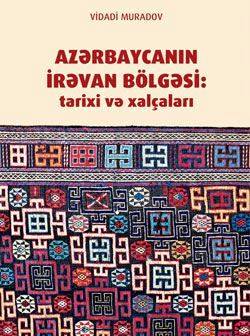İnka-öncesi (Pre-İnka) döneminde "Viracocha" ya da "Tici Viracocha" medeniyetin yaratıcısı, güneşin ve fırtınaların tanrısıdır ve İnkaların mitolojisine girer. Güneşten tacı ve ellerinde de yıldırım vardır. Quechua dilinde: Apu Qun Tiqsi Wiraqutra olarak adlandırılır ki bu da bizi Türkçe'ye getirir.
APU - Hakasya'da Apu yani Abakan Nehri ;
QUN = KÜN (İnka’da da Güneş Tanrısı olması sebebiyle)
"Kon-Tiki" veya "Con-Tiki" değil KÜN-TİKİ
TİQSİ = TİKİ = CON TİKİ = KON TİKİ = KÜN TİKİ
"Tiki" ise geceleri işitilen sestir. Bu kelime atalar kültüyle bağlantılı bir kelimedir, Peru'da da Türkler'de de aynı anlamı vardır. Heyerdahl haklıymış "Asya orijinli". Kitabında Atua kelimesi geçer: "O, öldükten sonra düşük değerde tanrılığa terfi eden, sıradan insanlardan oluşan bir grup büyük ilahi varlıkların prototipidir. Ve daha önce sözü edilen gerçek tanrılarla birlikte onlara ATUA denir." ATALAR yani... tıpkı Peru'nun son İmparatoru gibi - ATAHUALPA'daki ATA gibi.
Hecelemeden emin değilim: Wi-RA-QUT-RA ?!
ama: QUT=KUT (Kutsal)
RA-Güneş Tanrısı (Mısır) olabilir mi?
Araştırılmalı!
SB
Viracocha is the great creator god originally worshiped by the pre-Inca inhabitants of Peru and later assimilated into Inca mythology. He was also the God of the sun and storms. "Apu Qun Tiqsi Wiraqutra" is the name of the god in Quechua language, which brings us to Turkish.
APU=APU RİVER (Abakan-Khakassia/East Siberia); ;
QUN=KÜN (Sun) ;
TİQSİ=TİKİ= CON TİKİ = KON TİKİ = (Tr.)KÜN (SUN) TİKİ ;
"Tiki" is the sound heard at night, associated with the "Cult of Ancestors" and have the same meaning as in Turkish Culture. Heyerdahl was correct.
"Stolpe [1891, p.206], in an attempt to analyse the implications of the Tiki traditions throughout Polynesia, writes: “In Rarotonga, Tahiti, and New Zealand he is considered to have been the first man. He is the prototype of a great group of divine beings, all of whom have been ordinary men who have after death been promoted to be gods of a lower rank than the previously mentioned actual gods, and who are collectively called Atua. Tiki, regarded as a class of gods, are thus the ancestral spirits, to which are attributed divine worship, thus they are the protecting spirits of their own descendants and are venerated with images in which they take up abode on certain occasions. Such images are found in many forms, from the colossal stone statues of Easter Island to the small portable images of polished nephrite which are worn by the Maori.”
THOR HEYERDAHL'S
"AMERICAN INDIANS IN THE PACIFIC"
PART V: TRACES OF CAUCASION-LIKE ELEMENTS IN PRE-INCA PERU.
ATUA in Heyerdahl's writings is ATA= in Turkish "Ancestor". Like the last emperor of İnca/Peru - ATAHUALPA.
not sure about spelling : Wi-RA-QUT-RA ?! =
but: QUT=KUT in TURKISH (Holly) + RA=SUN God of Egypt?!
SB.
Pre-İnka Dokuması "Chancay" - MS.1200-1450
Pre-İnca Fabric "Chancay" 1200-1450 AD
for more:
The term Yörük /Yürük (Youruk) is derived from the Turkish verb "to walk, to march" "yori" (today yürü- walk). And Yörük (+ler) (Youruk+s) are not a different ethnic. They are Turkish people.
(second half of the 18th century and early 20th century)
Autor : V. A. Muradov
(Azerbaijans are Turks)
Turkmenistan Turks (photo from Eishan Art, a Turkmenistan Turk)
EFES (Ephesus) Turkish Symbol "Ram's Horn"
From Kazakhstan (also Turkish people)
An other Turkish Rug from Azerbaijan
Turkmenistan Turks
onlar anlamını hala çözememiş :)
Peki, Tamgalar bize tanıdık mı?
Do you have these symbols-motives in "German Carpet", or "English Carpet", or "French Carpet" or in "Persian Carpet" ?
No you don't. And yet, you (westerners) claim that Pazyryk Carpet is a "Indo-European" carpet! "Hide" the History of all Turkish Tribes. That's what you do! You all are a Joke! Because , These are the Social-Culture DNA of Turkish people, who is a Turk, or have Turkish blood in his veins.
Seljuk Turks Tattoo - Scandinavian Petroglyph- New Mexico/USA Petroglyph
For the petroglyph of New Mexico they explained as: "The symbolic meaning of the circle and dots is undetermined, however, it is believed to be linked to the Aztec god Quetzalcoatl."... Well this is the sign of the God (which is Tengri in Turkish) and Four Direction. Quetzalcoatl was a God afterall. And the origin of this symbol is Central Asia Turks. Scandinavians have also connection with the Turks, with Odin and his people and Hun-Turks after the dead of Attila. - SB.
Scandinavian petroglyph and the tattoo of a Seljuk-Turkish Girl is exact the same, God/Sun Symbol - Nuray Bilgili
Also similar in languages :
Chapultepec + Ometepe = TEPE = Little Hill in Turkish (have the same meaning as theirs/Quechua)
an other source:
Thor Heyerdahl and other scientists report a presence of a significant layer of American Indian words in the languages of the many tribes occupying Pacific ocean islands. It gives reasons to think that the settlers on these islands were Maya, Aztec, and Inka Indians from the continental Americas, among others. In that light can be attempted etymological understanding of the "Kon-Tiki", the name of the basalt log raft in the Thor Heyerdahl book, borrowed from an Inca legend.
As notes Thor Heyerdahl, "Kon" in Inca language means "Sun". As was already seen above, in the Mayan language "K'in" also means "sun", "day". And "Tik" means "God", "Leader". Inca language has a word teki in sense "leader, heading, going in the head", from which comes the word "tiki". In the Türkic languages the word "teke" means
simultaneously a ram-producer, and a leader of the sheep herd
Abrar Karimullin (1925-2000)
Professor, Kazan University
(and "kun" also means "day" and "sun", see above -
Translator's Note = N.Kisamov)(and "kun" also means "day" and "sun", see above -
Proto-Türks and American Indians
an other similarity:












